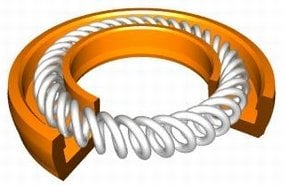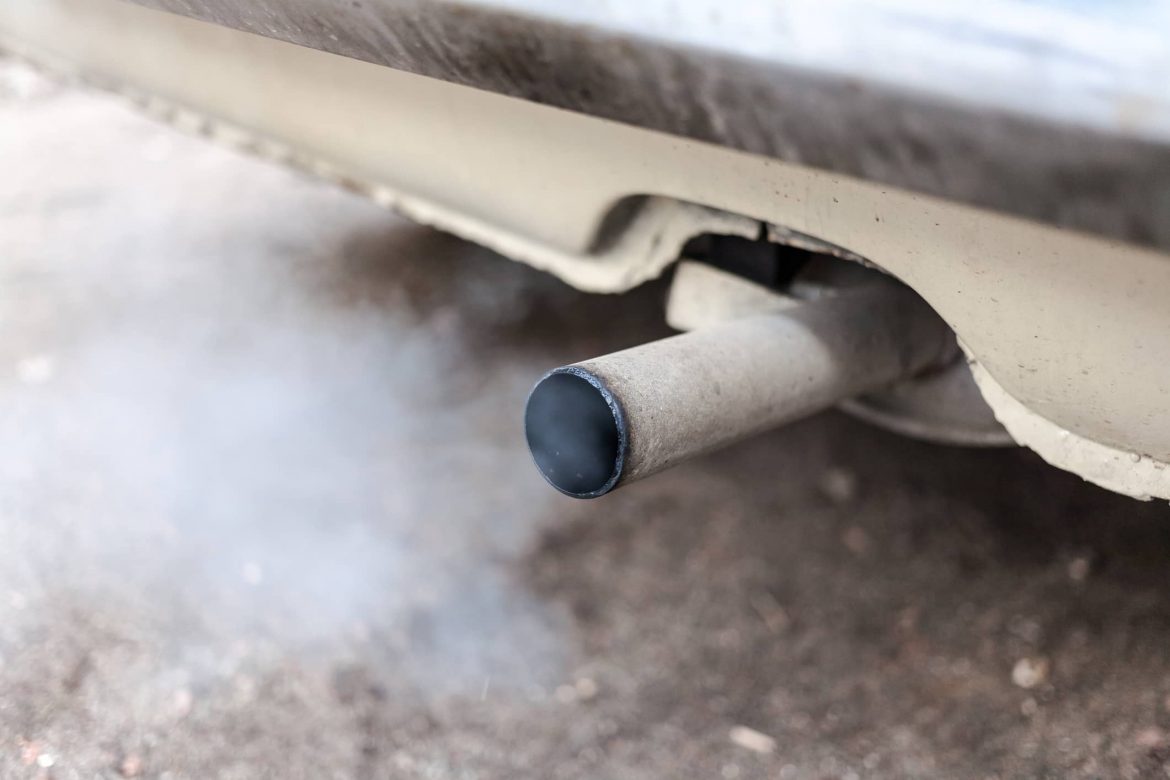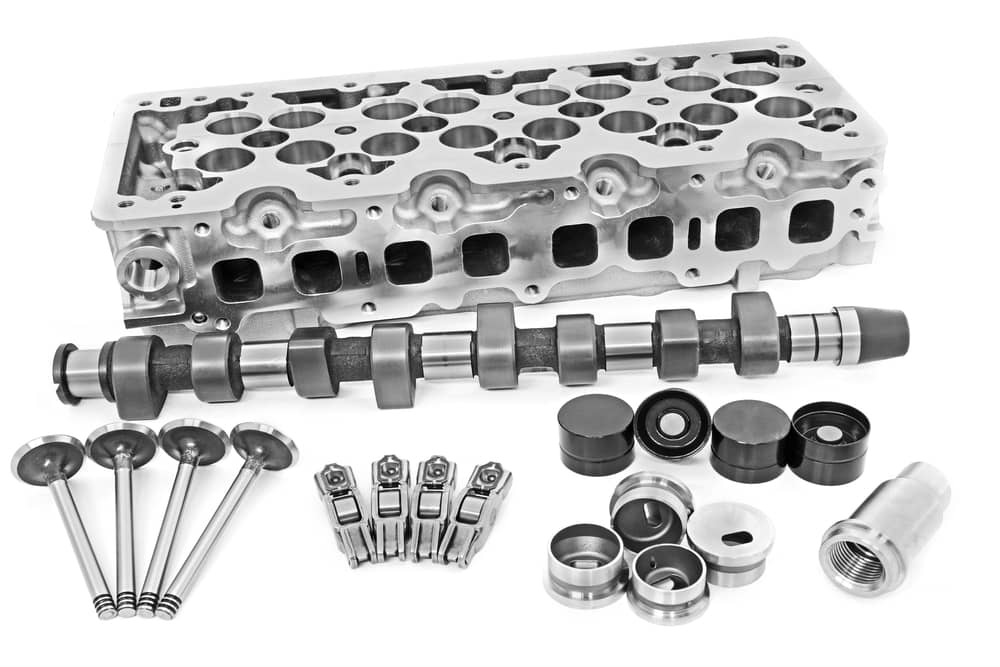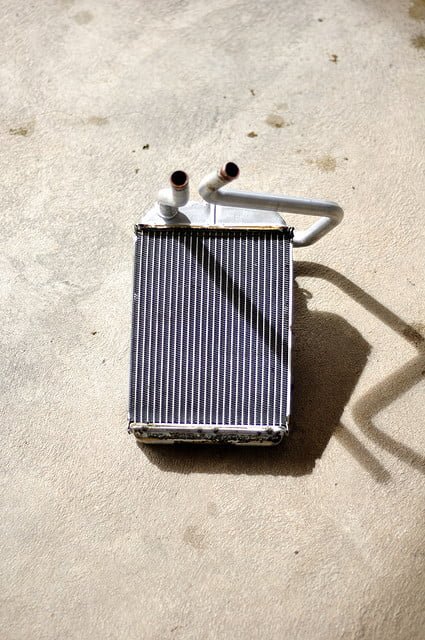Rear main seal repair may be much easier than you think. Most people are asking if they should replace their rear main seal, or even rebuild their motor and both of these are relatively difficult tasks due to the location of the rear main seal. The rear main seal in your vehicle is sandwiched in between your engine and transmission. It is actually a seal in your engine that seals where your crankshaft exits the engine. The crankshaft then has the flywheel or flexplate bolted to it and the transmission is connected after that.
What are oil seals?
 Almost all the oil seals in your vehicle are the relatively similar. Oil seals can be made from a wide variety of compounds based on the chemicals they are designed to seal and the temperatures they will operate at. Materials like Viton, nitrile and silicone can be used, but most automotive oil seals are made from rubber or PTFE. Rear main seals, like any shaft seal, is designed to press into the stationary housing around the shaft, in this case, the engine block, so the seal is constructed slightly bigger than the opening. The seal is also designed to hug the shaft as it rotates so it needs to be tight enough to stop fluid from escaping and contaminants from coming in. It also needs to be loose enough to allow the shaft to spin with as little friction and wear as possible. The size of the seal opening is carefully designed around the shaft to accomplish this balance. Shaft seals are also often fitted with small spring inside the lip to help hold the lip of the seal on the shaft and create a better seal.
Almost all the oil seals in your vehicle are the relatively similar. Oil seals can be made from a wide variety of compounds based on the chemicals they are designed to seal and the temperatures they will operate at. Materials like Viton, nitrile and silicone can be used, but most automotive oil seals are made from rubber or PTFE. Rear main seals, like any shaft seal, is designed to press into the stationary housing around the shaft, in this case, the engine block, so the seal is constructed slightly bigger than the opening. The seal is also designed to hug the shaft as it rotates so it needs to be tight enough to stop fluid from escaping and contaminants from coming in. It also needs to be loose enough to allow the shaft to spin with as little friction and wear as possible. The size of the seal opening is carefully designed around the shaft to accomplish this balance. Shaft seals are also often fitted with small spring inside the lip to help hold the lip of the seal on the shaft and create a better seal.
As we said, the placement of the rear main seal makes replacement a difficult task. It is possible in some cases to replace the rear main seal with the engine in the vehicle, but the transmission and flywheel or flexplate will always have to be removed. In some cases, the engine itself has to be removed for further disassembly. Once you’ve gone through all the work of removing the engine and transmission it can be a good idea to go ahead and rebuild them while the labor to pull them out has already been done. Also, if your rear main seal needs to be replaced, the chances are high that other components do as well.
But what if everything else in your vehicle is fine? If you are not experience any other problems with your vehicle that would necessitate an engine or transmission rebuild, it may be worth repairing your rear main seal rather than replacing it. In most cases, your rear main seal will start to leak simply due to use and age rather than actually being broken or irreversibly damaged. The simple rubbing of the crankshaft on the seal can stretch out the opening causing a leak. Also, a lack of use can cause the seal to dry out and start to shrink or get brittle over time also causing leaks.
How do I accomplish rear main seal repair?
Repair a shrunken, cracked, or hard rear main seal can be as easy as adding BlueDevil Rear Main Sealer to your engine oil. BlueDevil Rear Main Sealer does not have any petroleum distillates to damage the other seals and gaskets in your engine and it has no particulates to clog the small passages, or damage the internal components in your engine. BlueDevil Rear Main Sealer does have the ability to restore your rear main seal to its original size, shape and softness to allow it to continue to seal oil from leaking past your crankshaft. BlueDevil Rear Main Sealer is rear main seal repair in a bottle and is guaranteed to seal your rear main seal leak!
BlueDevil Products can be found on Amazon.com or at AutoZone, Advance Auto Parts, O’Reilly Auto Parts, NAPA, and other major auto parts retailers.
12 responses to "Rear Main Seal Repair"
12 Comments
Leave a Reply
Related Articles




I think this is the same product that used to be called White Shepard, does it have any negative effects on piston ring lubrication? Can I add gasket stop leak at the same time?
Jere-
Yes, the product was formerly labeled as “White Shepherd”; we changed the label to BlueDevil to match our branding for the BlueDevil Head Gasket Sealer.
The product will have no negative effects on the lubrication for the piston ring or any other components of the engine.
Thank You!
-BDP
I have a 1994 Mazda protege dohc and there had been a continuous leak coming from the passenger front left side. I have taken samples in and was told, water pump, transaxle seal, radiator. The driver side seal was replaced twice and still leaks. The oil pan drain plug was fixed and that stopped the dark brown oil leak. Then the light brown leak started up again and I am now thinking it is from the rear of the engine? Would that be the rear main seal? Could water be mixing with that because it feels light and oily. Do I use Blue Devil Engine oil stop leak? Help- I’m tired of mechanics not being able to ID this. Is there another stop leak by BD that I should use? I have had 2 radiators, 2 axle seals, and 1 drain plug and still leaking same place, same consistency. No smoking yet. Thank you
Suzanne,
Thanks for your question about your Mazda Protege. It does sound like you’ve got quite a few leaks at work, but it seems like at least one of them is a coolant leak. You can use BlueDevil Radiator and Block Sealer (available here: http://store.gobdp.com/radiator-block-sealer-00205/) to stop that leak. Also, since you mentioned your axle seals still leaking, try adding BlueDevil Transmission Sealer (available here: http://store.gobdp.com/transmission-sealer-00236/) to seal that leak. We would recommend starting there and once you’ve got those leaks stopped you will be able to figure out what else is leaking.
Thanks again for your question!
-BD Auto Pro
I HAVE A 2007 GMC DENALI…JUST HIT 110K..NEVA HAD NE MAJOR ISSUES..JUST TOOK 2 THE DEALER AND GOT A TUNEUP..IM IN KUWAIT..SO THAT MADE IT EASIER FOR THE WIFE…WELL THE DEALER SAID I HAD A TRANSMISSION COOLER LINE LEAK….AND WANTED 550.00 TO DO IT…SO I HAD HER TAKE IT TO A FRIENDS SHOP OF MINE, AND WHEN THEY LOOKED AT IT…THEY FOUND A REAR MAIN SEAL LEAK….SAID HE WOULD CHARGE 850.00 AND IT WLD LIKE A 7Hr job…WTH…MY WIFE SAID SHE DOESN’T SEE NE LEAKS ON THE GARAGE FLOOR….I BOUGHT THE VEHICLE NEW…AND THIS IS THE 1st major problem…Should I use BD for the rear main seal, or get it fixed…Is BD PERMANENT OR TEMPORARY? IS IT A INTERNAL PROBLEM, OR EXTERNAL??
Toney-
Thank you for asking about your GMC Denali. Based on your description, we would recommend the BlueDevil Rear Main Sealer, found here: http://store.gobdp.com/rear-main-sealer-00234/. As long as you are not losing oil too quickly, you should be able to see some great results from the product. Typically, you should start to see results after about 100-200 miles of driving. Once the product seals, it is a permanent seal. Feel free to contact our technical support line at 888-863-0426 with any other questions.
Thank you!
-BDP
It restores PTFE seals as well? ?
Edward-
The BlueDevil Rear Main Sealer is only intended for the rubbers in the system and would not have any affect on Teflon.
Thank you!
-BDP
I have a 2000 s/10 it has a small oil leak somewhere not sure but seams to be around rear seal but can’t tell if running from top around valve covers.Should I use the blue devil rear sealer or your oil leak sealer listed .will either one work on both types of leaks?
Randy-
Thank you for asking about your Chevy S10. Based on your description, we recommend using the BlueDevil Oil Stop Leak http://store.gobdp.com/oil-stop-leak-49499/. The BlueDevil Oil Stop Leak is a universal application and would treat leaking oil pan gaskets, valve cover seals, rear main seal, etc., whereas the Rear Main Sealer is specifically formulated for the rear main seal. If you are not 100% sure where the leak is coming from, or if you have multiple leaks, the Oil Stop Leak is what you would want to use.
Thank you!
-BDP
I have a 2004 kia spectra what started out as a small leak some say could be the plug or main sealer is now coming out fairly quickly will BD rear seal sealer work or is it to late
Christa-
Thank you for asking about your Kia Spectra. The BlueDevil Rear Main Sealer is intended for leaks that are seeping, or lightly dripping from the system. Based on your description, unfortunately, you may be losing oil a little too quickly for the product to be affective. A hard part repair may be your best option.
Thank you!
-BDP